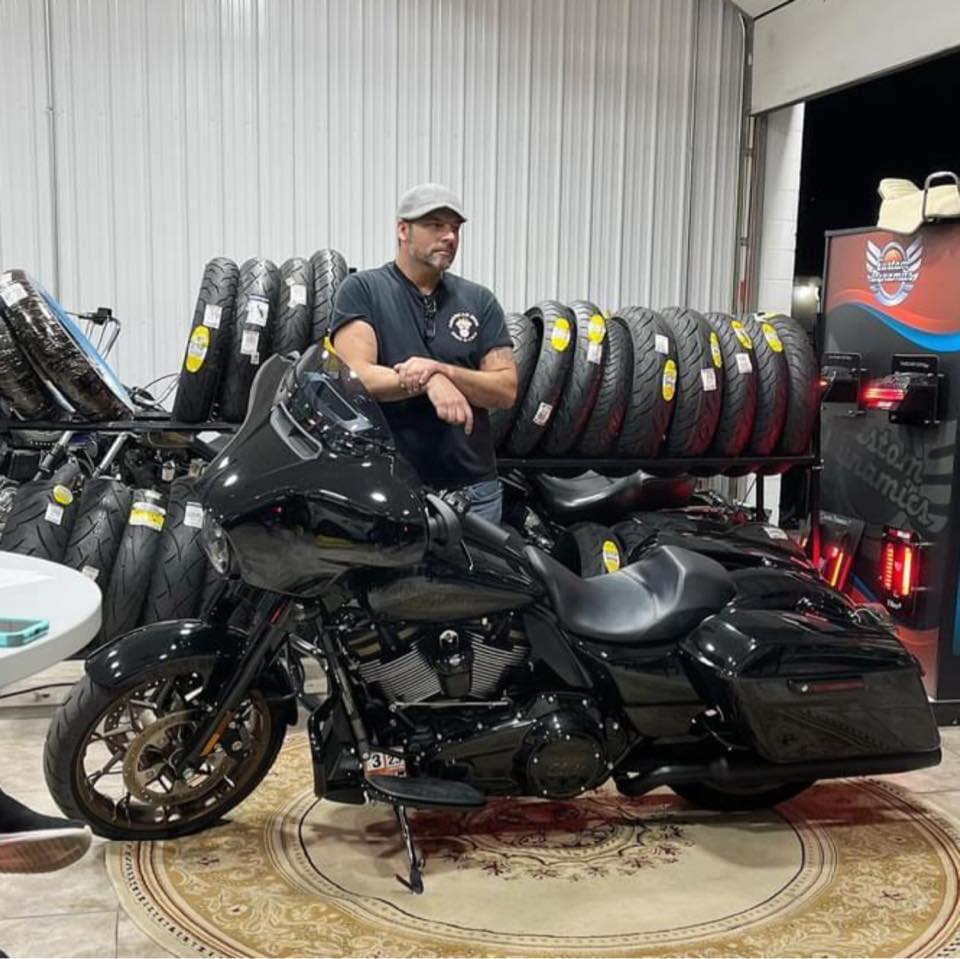
The History of American V-Twin Motorcycles: From the Early Days to Modern Rides
American V-Twin motorcycles have a rich and storied history that has shaped the motorcycle industry as we know it today. From the earliest days of motorcycle design to the roaring success of brands like Harley-Davidson®, the V-Twin engine has been at the heart of American motorcycle culture. Whether you’re a seasoned rider or just starting to explore the world of V-Twins, understanding the history of these machines gives you a deeper appreciation for the innovation and craftsmanship that went into making them iconic. Let’s take a look at how American V-Twin motorcycles evolved over the years.
The Birth of the V-Twin Engine
The V-Twin engine, with its unique two-cylinder configuration arranged in a V shape, was first introduced to the motorcycle world in the early 1900s. While early motorcycle engines were simple, single-cylinder designs, the V-Twin offered a more powerful and smoother ride, making it ideal for larger, heavier bikes.
The first notable V-Twin engine was produced by the Indian Motorcycle Company in 1907, though Harley-Davidson® soon followed with its own V-Twin engine, solidifying the design as the standard for American motorcycles. The V-Twin engine quickly became known for its distinctive sound and raw power, earning a special place in the hearts of riders.
The Rise of Harley-Davidson® and Indian Motorcycles
By the 1920s, Harley-Davidson® and Indian Motorcycle were the two dominant forces in the American motorcycle industry, both using V-Twin engines. Harley-Davidson®'s V-Twin models, such as the 45-degree engine configuration, were known for their durability and performance, making them popular with both civilian riders and military personnel.
Indian Motorcycle, on the other hand, offered a range of V-Twin bikes with a slightly different design, known for their smooth operation and higher top speeds. Despite differences in styling and performance, both companies became synonymous with American motorcycles and the V-Twin engine.
The Golden Age of V-Twin Motorcycles
The mid-20th century saw the American V-Twin motorcycle become a symbol of freedom and rebellion, especially in the post-World War II era. As returning soldiers embraced motorcycle culture, brands like Harley-Davidson® and Indian played a significant role in shaping the image of the American biker.
The 1950s and 1960s marked the golden age of American V-Twin motorcycles, with both brands releasing iconic models that would become legends in the motorcycle world. Harley-Davidson® introduced the iconic Panhead engine, which was followed by the Shovelhead in the 1960s, both of which offered increased power and smoother operation, making them favorites among enthusiasts.
The Decline and Revival of American Motorcycles
By the 1970s, the American motorcycle industry faced tough competition from foreign manufacturers, particularly Japanese brands like Honda, Yamaha, and Kawasaki, which offered more affordable and reliable bikes. This led to a decline in the popularity of American-made V-Twin motorcycles, and Indian Motorcycle eventually shut down.
However, Harley-Davidson® managed to survive the challenging decades that followed, thanks to a renewed focus on quality and innovation. In the 1980s and 1990s, Harley-Davidson® made a successful comeback, partly through the resurgence of the custom motorcycle scene and the increasing popularity of V-Twin engines. This revival also came with the introduction of new models that combined vintage aesthetics with modern technology, appealing to a new generation of riders.
The Modern V-Twin: Performance and Customization
Today, American V-Twin motorcycles, especially those from Harley-Davidson®, continue to thrive as one of the most recognizable types of motorcycles in the world. Modern V-Twin engines have evolved significantly, offering even more power, smoother rides, and increased fuel efficiency. Technological advancements in fuel injection, exhaust systems, and electronic controls have all helped improve the performance of V-Twin engines, making them more reliable and efficient than ever.
The customization culture surrounding American V-Twin motorcycles has also flourished in recent years, with riders able to personalize every aspect of their bikes, from performance parts like high-flow air intakes and performance exhausts to aesthetic modifications such as custom paint jobs and aftermarket accessories.
V-Twin Engines in the Racing Scene
While American V-Twins are often associated with cruising on the open road, they’ve also made their mark in motorsports. Harley-Davidson® motorcycles have been part of the racing scene for decades, with V-Twin-powered bikes competing in flat track racing, road racing, and drag racing. The raw power and torque of V-Twin engines make them ideal for high-performance racing, and they continue to be a key player in the motorsports world.
Conclusion
The history of American V-Twin motorcycles is a testament to the enduring power, performance, and passion that these bikes represent. From their early days in the 1900s to their place in modern motorcycle culture, V-Twins have become more than just a type of engine—they are a symbol of American craftsmanship and a way of life for countless riders around the world.
Whether you’re looking to restore a classic or upgrade your modern Harley-Davidson®, American Iron Speed-n-Cycle has the parts and expertise to help you keep your V-Twin running at its best. Visit us today to learn more about how you can continue to embrace the legacy of the American V-Twin motorcycle.